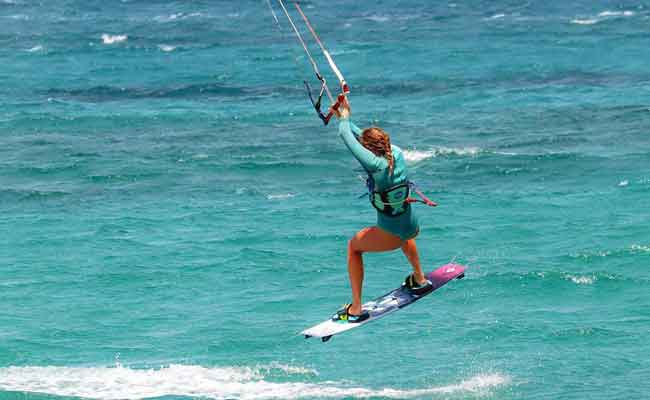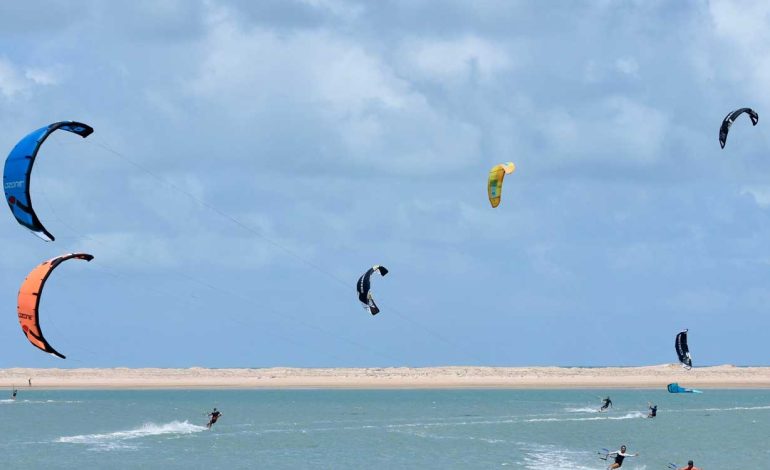Her blond hair dripping with salt water, top Austrian kitesurfer Gabi Steidl cuts through the translucent, emerald green waves of the Indian Ocean.

Kitesurfing, a high-tech hybrid of surfing and kite flying, is fast winning converts: riders harnessed to kites who stand on boards and skim, surf or even leap, often hanging in the air for several seconds.
With its world-class winds, plenty of breakers and calmer lagoons for beginners, Mauritius is determined to cash in. “It is just the most beautiful island and the conditions are perfect,” said 31-year-old Steidl, who gave up a career in publishing to follow her passion full time.
“It is like a huge wave playground.”
On the beach, a dozen kitesurfers check lines and launch their kites as the midday sun hits its peak. Thomas, 46, from Cape Town, says his home waters in South Africa are rather cold for kiting in July. He was bowled over by his first visit to Mauritius 10 years ago.
“I hope people here stay this friendly,” he said.
Mauritius is located approximately 2,000 kilometres off the southeast coast of Africa, east of Madagascar. The waters around Le Morne, a huge clump of rock where runaway slaves used to hide, are a mixture of reefs, crashing waves and lagoons. Some kiters also known as kiteboarders come to test themselves on the notorious One Eye, says Felix, who runs the Club Mistral water sports centre. His guests are not allowed to try it, as it is too dangerous.
Huge, green walls of water roll in from the ocean, gathering pace as they curl into a perfect tube before breaking in a ferocious thunder of foam. “This is one of the fastest waves worldwide,” Nollman says. “If you are kiting on One Eye, you always have a bit of speed and you need it . . . If not, it catches up and smashes you on the reef where there are lots of sea urchins and coral.”
According to Toby, whose website kiteforum.com says an average of five kite surfers die each year around the world, technical improvements and increased kite control mean the sport has become safer. Braeuer advocates 10 golden rules, including staying away from hazards, keeping a close eye on the weather and taking advice from locals about potential dangers such as currents and rocks. “If you stay within these rules, it is a very relaxing sport. But if you break these rules, you can die,” he says. “Go and take a lesson. That’s very important,” he adds.
After three lessons in a lagoon on the island’s windy east, this writer is still looking forward to being able to stand up on the board, apparently the hardest part of learning. French and Hawaiian enthusiasts began experimenting with early versions of kitesurfing more than 20 years ago. As late as 1997, only a few dozen were dabbling. Today, an estimated 200,000 people kitesurf. The technology has evolved from flat kites with two strings to space-age ones with inflatable rims that help fallen kites relaunch. “Strong gusts come, you just push away the bar,” Braeuer said.


